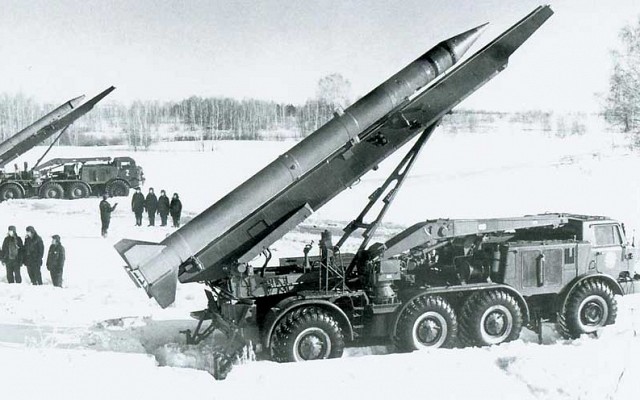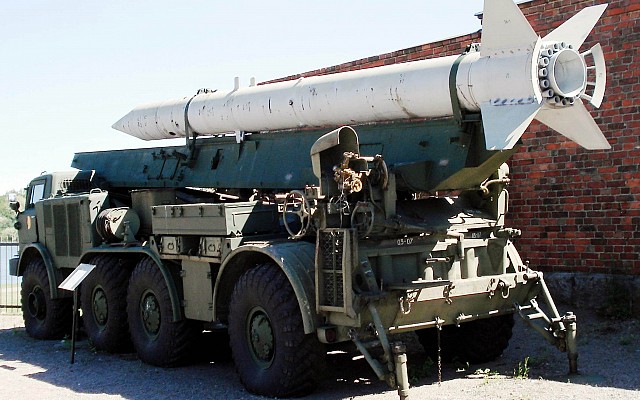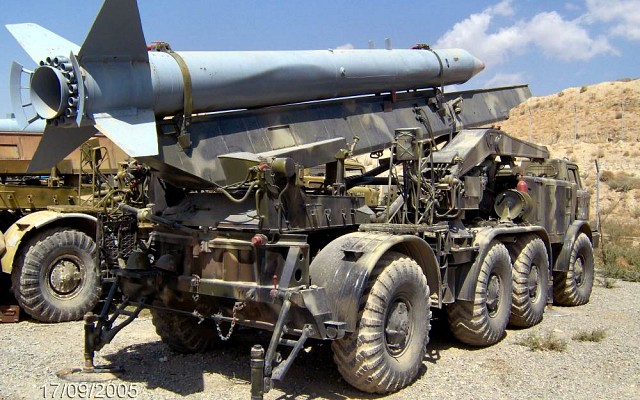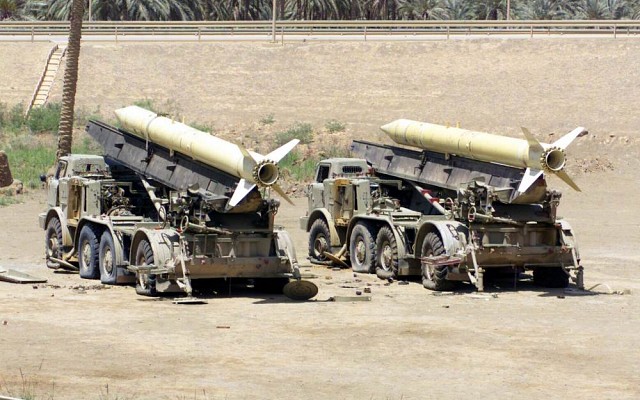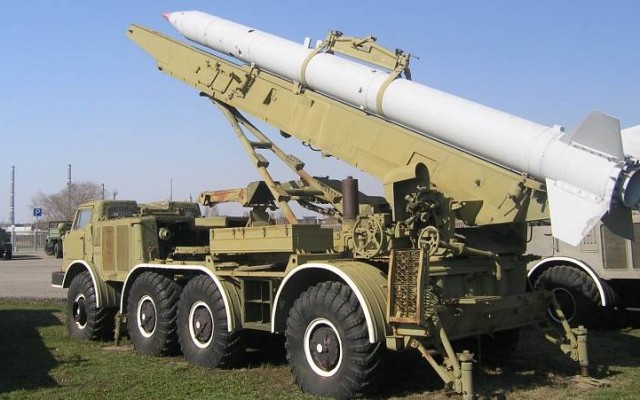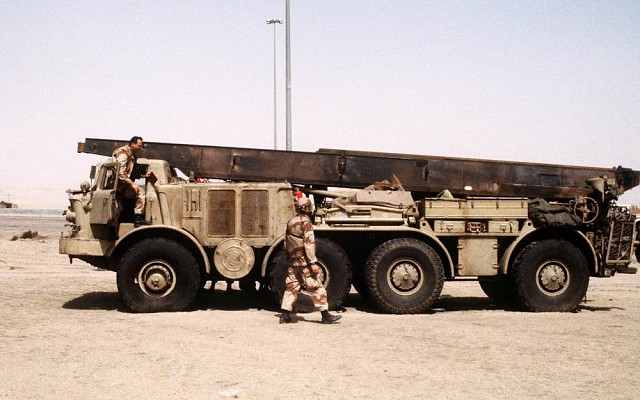9K52 Luna-M
NATO: FROG-7
Overview
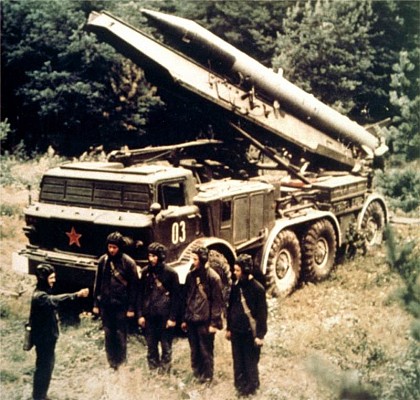
9P113
9K52 Luna-M during a Soviet excersize in 1982.
Source: US DOD -
© public domain
Soviet Union - OKB-329 GKAT
9K52 (GRAU index)
Iraq
Description
Introduction
The 9K52 Luna-M is an early Cold War era artillery rocket system of Soviet origin. In the West the 9K52 Luna-M is known best by the NATO reporting name FROG-7. It was developed in the Soviet Union as a replacement for the earlier FROG series artillery rockets.
Design
The FROG-7 launch vehicle is based on the BAZ-135 8x8 truck chassis. It carries a single launch rail for the 9M21 rocket and is fitted with two outriggers. The 9M21 artillery rocket is unguided and features a solid propellant rocket motor. The 9T29 transloader vehicle is based on the same BAZ-135 chassis and carries three rockets. A fire direction vehicle based on the GAZ-66 tows a trailer-mounted meteorological radar.
Firepower
The FROG-7 fires the massive 9M21 artillery rockets with various types of warhead. These are unguided and spin stabilized. The range envelope is 12 to 68 km. The accuracy is limited with a CEP of 400 to 700 meters. Preparation time before firing is 15 to 30 minutes.
Protection
The FROG-7 is based on a softskin vehicle and during firing and reloading the crew is unprotected. There is no NBC system. Its main protection is that this system is to be employed 15 km or more behind the front line.
Mobility
The BAZ-135 8x8 vehicle allows for a reasonable cross country performance and good road speeds. Due the twin engine setup the BAZ-135 is complex to maintain and proved susceptible to breakdowns. The 9K52 Luna-M system can be airlifted using multiple Il-76 or An-22 transport aircraft.
Users
The FROG-7 was widely employed as a tactical weapon by the USSR and Eastern Europe during the Cold War. It was also exported to many allies of the USSR. Nowadays in Eastern Europe and Russia it is mostly phased out or replaced by the newer 9K79 Tochka (NATO: SS-21 Scarab). The FROG-7 remains in storage with several nations.
System composition
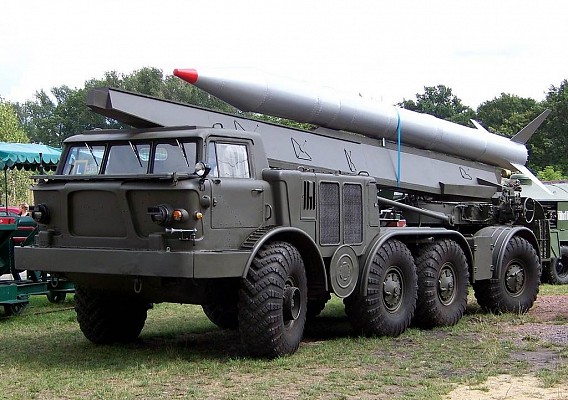
9P113 launch vehicle
Transporter, erector and launcher of the 9K52 Luna-M system based on the ZIL-135LM 8x8 truck chassis. A single 9M21 series artillery rocket is carried on the launch rail. A crane stowed on the right hand side of the launch rail is used for reloading.
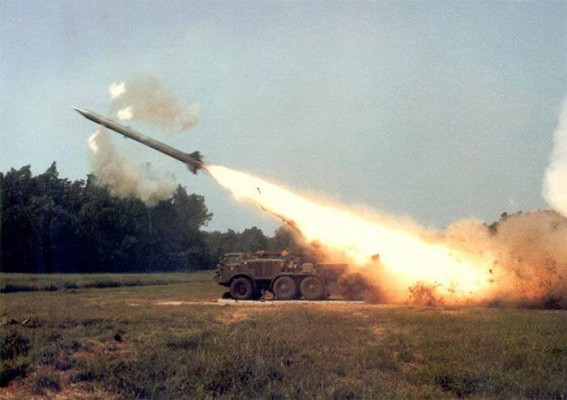
9M21 family of artillery rockets
Family of unguided artillery rockets. Various warheads have been developed, ranging from conventional to cluster and from chemical to nuclear.
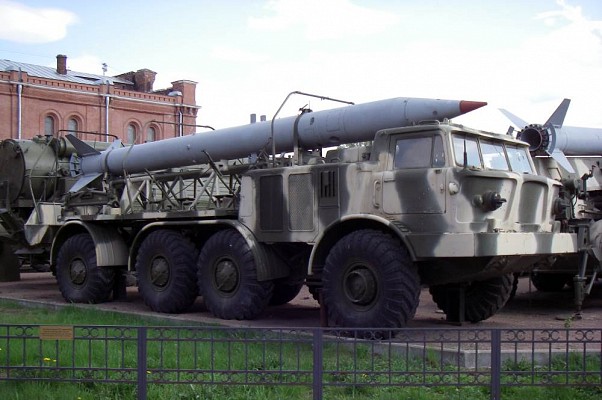
9T29 transloader
Resupply vehicle based on the ZIL-135LM 8x8 chassis. This truck can carry up to three 9M21 rockets. Since the tail fins are fixed the two outward rockets are carried at a steep angle and the center one more horizontally. The 9T29 cannot launch the 9M21 rockets and is not fitted with a crane.
Details
9M21 family of artillery rockets
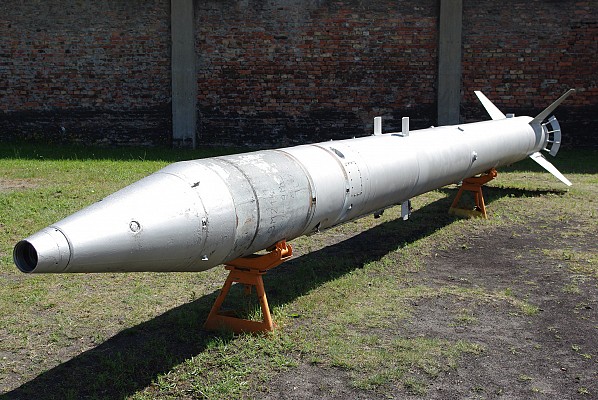
9M21F rocket
R-65 rocket, the export designation of 9M21F, seen on display in a museum.
Source: jens.lilienthal -
© Copyright lies with original owner
Details of 9M21 rockets
Media
Related articles
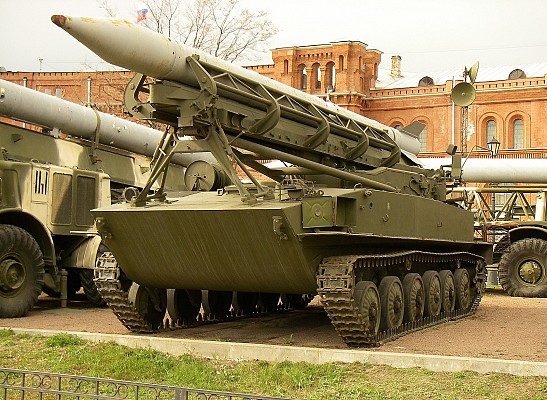
2K6 Luna
The 9K52 Luna-M was developed as a successor for earlier systems such as the 2K6 Luna.
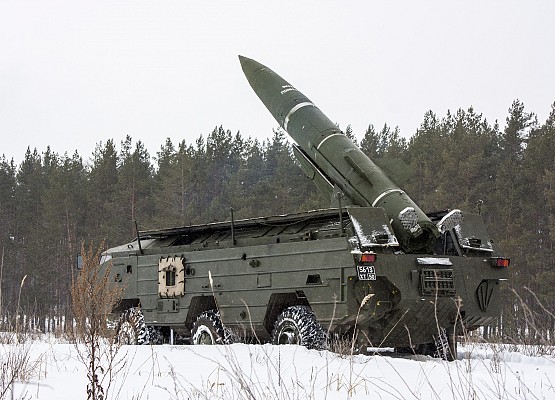
9K79 Tochka
The Tochka (NATO: SS-21 Scarab) replaced the Luna-M in Soviet service. Tochka is a much more capable system with nearly twice the range and increased accuracy and warhead size.
